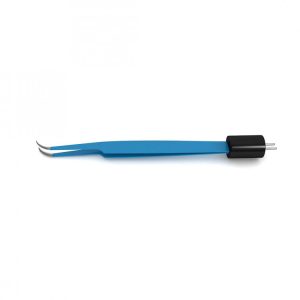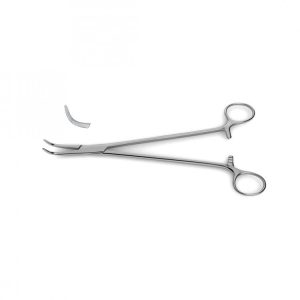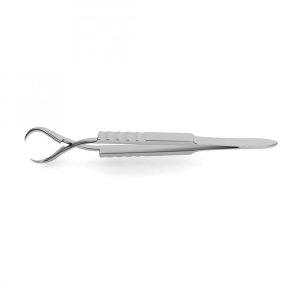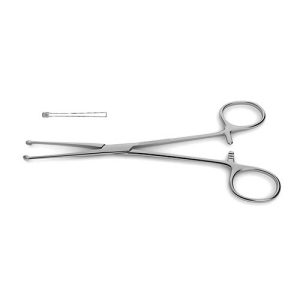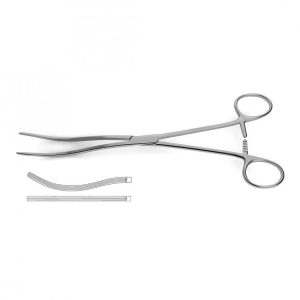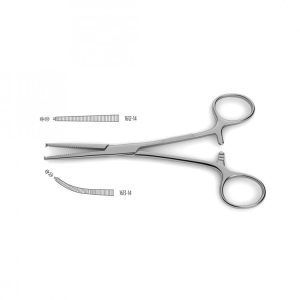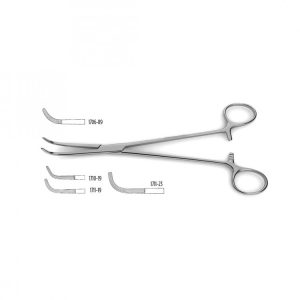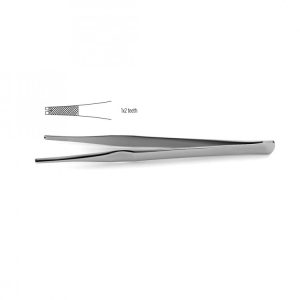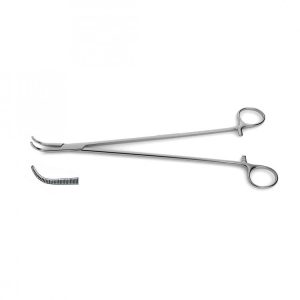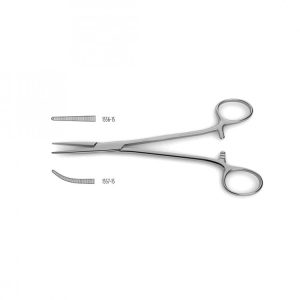Forceps & Clamps
Jeweler’S Bipolar Forceps
Bipolar Forceps
0.4 mm tip, 4" (10.0 cm)
Jeweler's Bipolar Forceps are designed to minimize heat and current while coagulating. For use during bipolar electrosurgical procedures, these forceps are designed with a 0.4 mm tip which is available either straight or curved. Ideal for situations where a finer bipolar forcep is required. Both models are available in both insulated and insulated with irrigation. Bipolar forceps are designed to control temperatures, minimize heat and current spread and reduce tissue sticking or charring while coagulating during bipolar electrosurgical procedures. They are available in a variety of styles that provide bipolar coagulating capabilities for a wide range of procedures: irrigating or non-irrigating (for flushing surgical site to improve visualization), with or without insulation (to eliminate conduction to surrounding tissues when performing deep procedures), straight or bayonet-shaped (to enhance visibility by keeping the surgeon's hand from the line of sight). Manufactured from premium, German stainless steel with a satin finish. Call us today regarding non-stick versions of our line of bipolar forceps.
Jones Thoracic Clamp
Jones Thoracic Clamp
9" (22.9 cm)
Jones Thoracic Clamp may be used during thoracic procedures in order to clamp off ruptured blood vessels or hold tissue. The ring-handles and the 9" long length adds more force when clamping, and the curved serrated jaws provide the tight grasp. This forceps is polished to a dull, satin finish to minimize any glare from operating room lights.
Kelly Forceps
Kelly Forceps
Kelly Forceps are made from premium German stainless steel and are a type of hemostat that can be used in medical situations that require blocking a hemorrhaging blood vessel. The curved or straight patterned jaws are partially serrated, which may allow for blunt dissection as well. These forceps are offered in two different sizes, including a "rankin," which signifies a 6 ¼" length.
Kelly Tissue Forceps
Kelly Tissue Forceps
3x4 teeth, 9" (22.9 cm)
Kelly Tissue Forceps are handcrafted from surgical grade German stainless steel. Designed with 3x4 teeth, 9" in length and a narrow silhouette, this instrument is ideal for demands of cardiovascular procedures. The slotted handle ensures this instrument is lightweight and easy to manipulate.
Kocher Clamp Forceps
Longitudinal serrations, 5" (12.7 cm) jaw length, 10-1/4" (26.0 cm)
Kocher Clamp Forceps have longitudinal serrations on its 5" jaw length. These serrations help to reduce the chances of slippage to the tissue or intestines that are being clamped. These ring-handled clamp forceps also have the option of a straight or curved jaw.
Kocher Forceps
Kocher Forceps
1x2 teeth, 5-1/2" (14.0 cm)
Kocher Forceps contain 1x2 teeth on straight or curved jaws to avoid slippage when trying to grip arteries. Although this hemostatic forceps is typically used for general surgeries, it may also be applied to more specific procedures such as draining of the gallbladder or removal of the thyroid.
Lanes Tissue Forceps
Lanes Tissue Forceps
cross-serrated
Lanes Tissues Forceps are handcrafted from surgical grade German stainless steel. Designed with cross-serrations and either 1x2 teeth or 2x3 teeth, these tissue forceps are used in ob-gyn procedures. The smooth, flat handle with the indented grip assures comfort and control for the surgeon.
Lawrence Forceps
Lawrence Forceps
jaws strongly curved
Lawrence Forceps are comprised of heavily serrated jaws that are strongly curved and may reach areas that are harder to attain. Due to the locking ratchet mechanism on the ring-handles, this forceps may be used as a clamp to control bleeding in arteries or vessels in general surgeries, specifically thoracic operations. To accommodate different procedures, this instrument is offered in two different lengths.
Leriche Artery Forceps
Artery Forceps
6" (15.2 cm)
Leriche Artery Forceps have an overall length of 6" that feature vertically serrated jaws that come in a straight or curved design. The jaws also have blunt tips and are able to lock due to the ratchet mechanism on the inner part of the ring-handles. This ratchet allows for a tight close on broken blood vessels.

